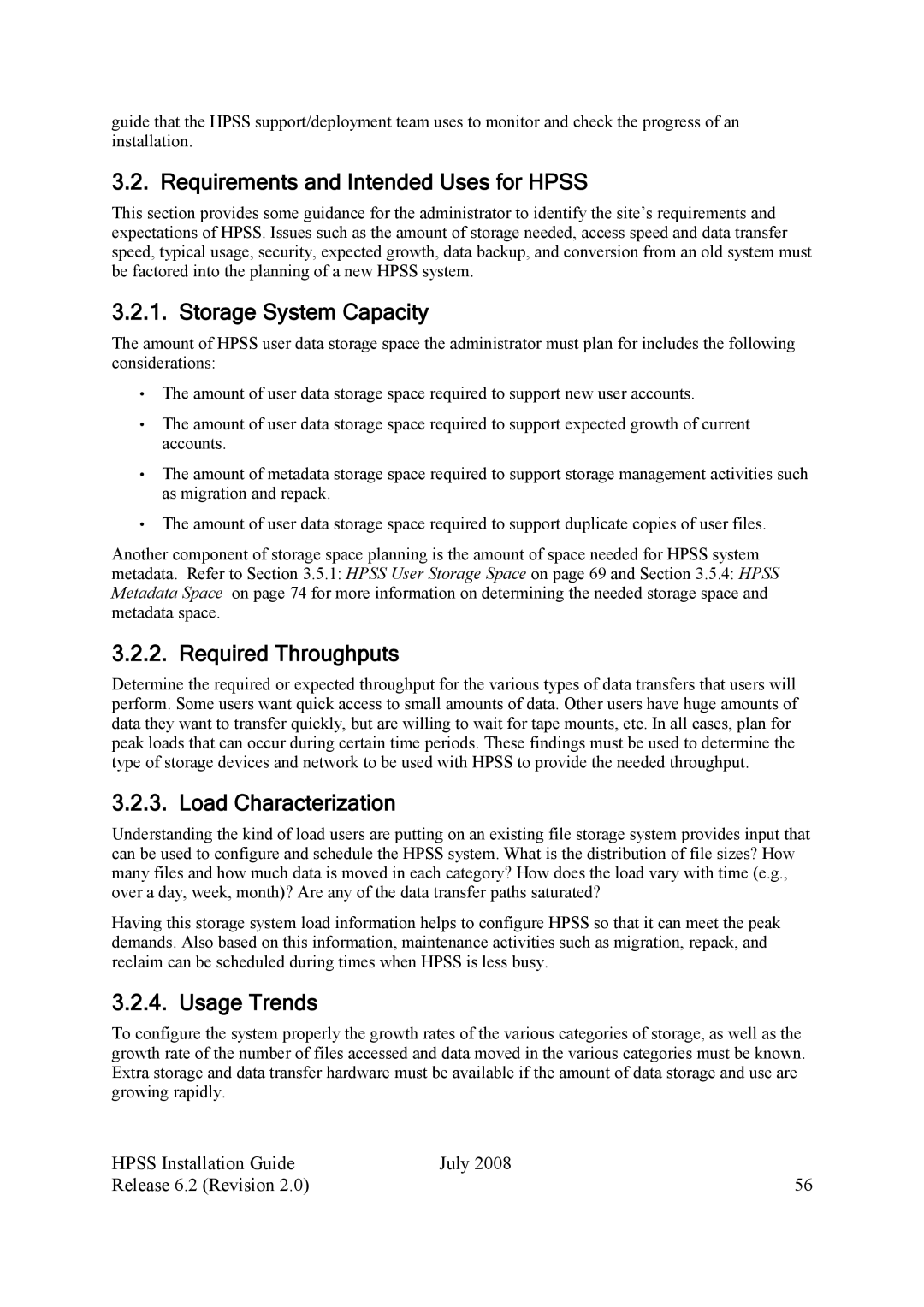guide that the HPSS support/deployment team uses to monitor and check the progress of an installation.
3.2. Requirements and Intended Uses for HPSS
This section provides some guidance for the administrator to identify the site’s requirements and expectations of HPSS. Issues such as the amount of storage needed, access speed and data transfer speed, typical usage, security, expected growth, data backup, and conversion from an old system must be factored into the planning of a new HPSS system.
3.2.1. Storage System Capacity
The amount of HPSS user data storage space the administrator must plan for includes the following considerations:
•The amount of user data storage space required to support new user accounts.
•The amount of user data storage space required to support expected growth of current accounts.
•The amount of metadata storage space required to support storage management activities such as migration and repack.
•The amount of user data storage space required to support duplicate copies of user files.
Another component of storage space planning is the amount of space needed for HPSS system metadata. Refer to Section 3.5.1: HPSS User Storage Space on page 69 and Section 3.5.4: HPSS Metadata Space on page 74 for more information on determining the needed storage space and metadata space.
3.2.2. Required Throughputs
Determine the required or expected throughput for the various types of data transfers that users will perform. Some users want quick access to small amounts of data. Other users have huge amounts of data they want to transfer quickly, but are willing to wait for tape mounts, etc. In all cases, plan for peak loads that can occur during certain time periods. These findings must be used to determine the type of storage devices and network to be used with HPSS to provide the needed throughput.
3.2.3. Load Characterization
Understanding the kind of load users are putting on an existing file storage system provides input that can be used to configure and schedule the HPSS system. What is the distribution of file sizes? How many files and how much data is moved in each category? How does the load vary with time (e.g., over a day, week, month)? Are any of the data transfer paths saturated?
Having this storage system load information helps to configure HPSS so that it can meet the peak demands. Also based on this information, maintenance activities such as migration, repack, and reclaim can be scheduled during times when HPSS is less busy.
3.2.4. Usage Trends
To configure the system properly the growth rates of the various categories of storage, as well as the growth rate of the number of files accessed and data moved in the various categories must be known. Extra storage and data transfer hardware must be available if the amount of data storage and use are growing rapidly.
HPSS Installation Guide | July 2008 |
Release 6.2 (Revision 2.0) | 56 |
